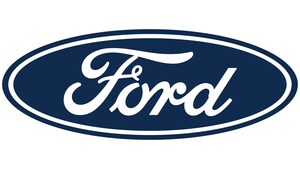Ford Begins Building One of the World's First Digital Child Crash Dummies
DEARBORN, Mich., March 31, 2011 /PRNewswire/ --
- Ford begins one of the world's first research projects to build a digital human model of a child with more lifelike re-creations of the skeletal structure, internal organs and brain – to enhance future safety research
- Ford researchers are building the model from child MRIs to better understand how crash forces affect children and adults differently
- Current adult digital models took more than a decade to create and are painstakingly detailed
- Researchers started the project after monitoring and studying injury trends for children who generally are more vulnerable in crashes
Ford is beginning research into one of the world's first digital human child body models that could someday serve as a digital dummy for computer crash testing with a goal of enhancing research of future safety technologies.
"We study injury trends in the field, and we know that traffic crashes are the leading cause of death for people from age 1 to 34," said Dr. Steve Rouhana, Senior Technical Leader for Safety, Ford Research and Advanced Engineering. "We want to better understand how injuries to younger occupants may be different."
The work is the next step in Ford's decade-long research to build a sophisticated and detailed computer adult human model, with body parts and organs painstakingly replicated so scientists could better understand what happens to the adult body in a crash.
"Our restraint systems are developed to help reduce serious injuries and fatalities in the field, and they have proven to be very effective," Rouhana said. "But crash injuries still occur. The more you know about the human body, the more we can consider how to make our restraint systems even better.
"A child's body is very different from an adult's. Building a digital human model of a child will help us design future systems that offer better protection for our young passengers."
Working in the digital world
Building a digital model is no simple task. The work on Ford's adult human body model that started back in 1993 was not completed until 2004 and only then after extensive validations. Digital models are used in research, not in vehicle development. They don't take the place of crash dummies, which measure the effect of forces on the body. Instead, they are used as a way to understand how to further improve restraint system effectiveness through better understanding of injury mechanisms.
The digital model is constructed component by component – brain, skull, neck, ribcage, upper and lower extremities, etc. – with extensive research included on each part.
"Building the model of a person is just like building a model of a car," said Rouhana. "You start with your surface geometry for each component and any subcomponent it contains – in this case the geometry of the human body and its internal organs."
After gathering such data through medical scans as well as anatomical texts, the researchers build a model section by section, creating regions of the body. The brain in Ford's adult human digital model was constructed as a separate component, detailed down to the stem, the gray matter and the fluid between the layers, said Dr. Jesse Ruan, a researcher in biomechanics at Ford.
The components are then joined into a virtual human body, which is extensively validated. Then, using mathematical and analytical tools combined with available body data, researchers are able to determine the effects of a crash – and the pressure of a restraint system – on the body.
Child data, however, are not as extensively available. Ford researchers, leveraging their global contacts, contracted into a one-year agreement with Tianjin University of Science and Technology, which is working with Tianjin Children's Hospital, to obtain child geometry and basic body information from sources like MRIs and CAT scans provided by volunteers. Tianjin is one of the largest cities in China, close to the capital of Beijing. All other information for the project will be obtained from public domain literature.
"This is just the beginning," said Ruan. "We're taking the first step toward building a future child digital human body model."
About Ford Motor Company
Ford Motor Company (NYSE: F), a global automotive industry leader based in Dearborn, Mich., manufactures or distributes automobiles across six continents. With about 164,000 employees and about 70 plants worldwide, the company's automotive brands include Ford and Lincoln. The company provides financial services through Ford Motor Credit Company. For more information regarding Ford's products, please visit www.ford.com.
SOURCE Ford Motor Company
WANT YOUR COMPANY'S NEWS FEATURED ON PRNEWSWIRE.COM?
Newsrooms &
Influencers
Digital Media
Outlets
Journalists
Opted In






Share this article